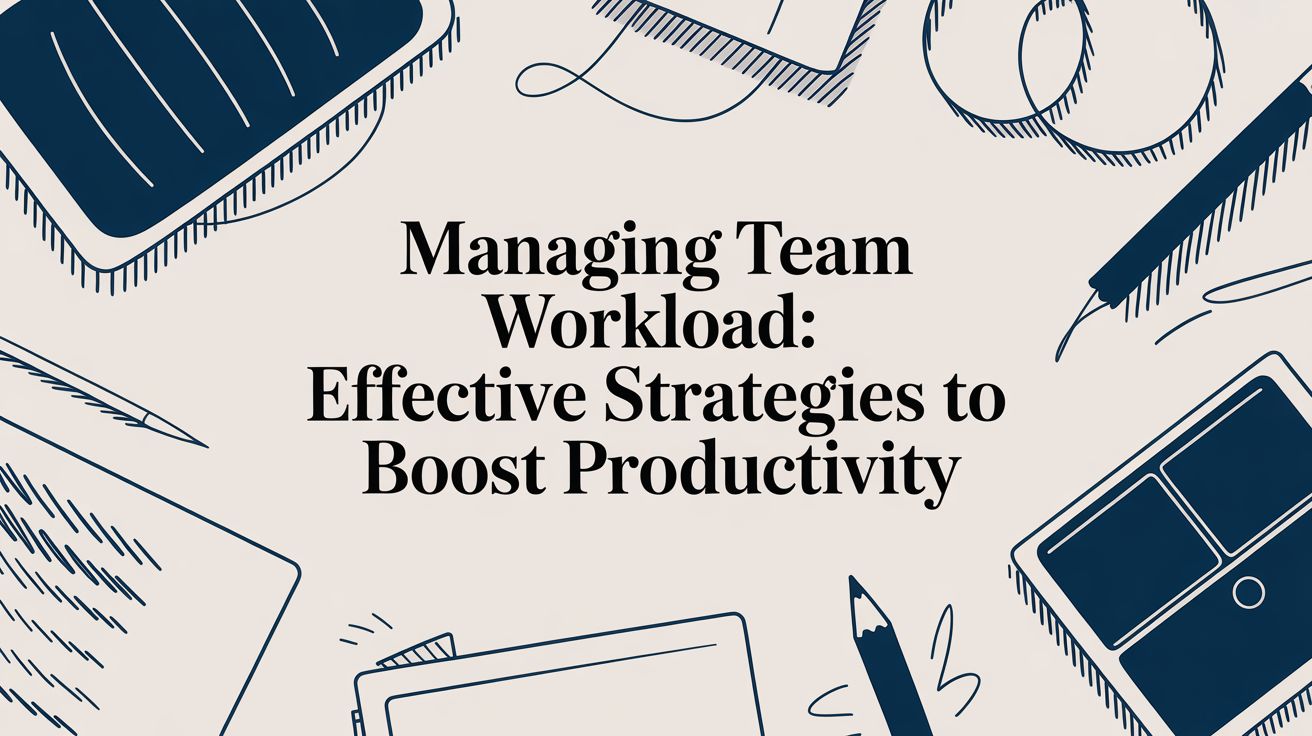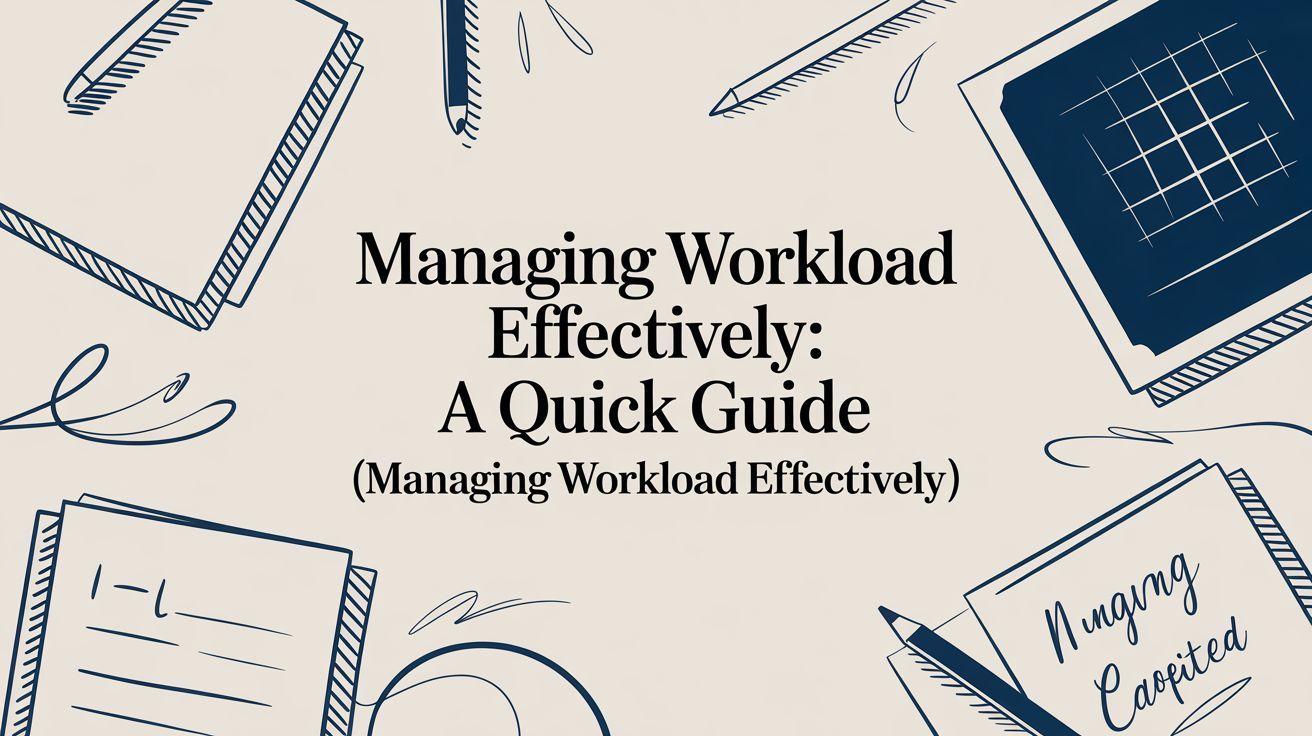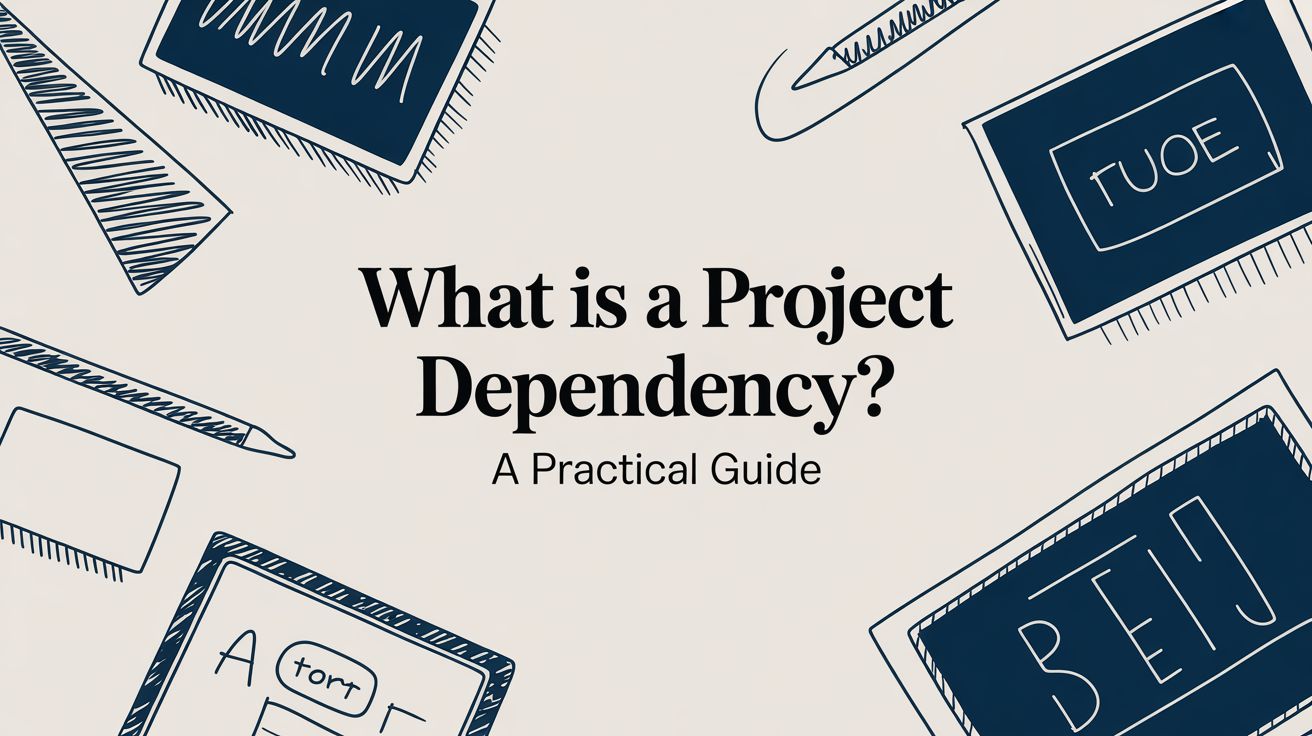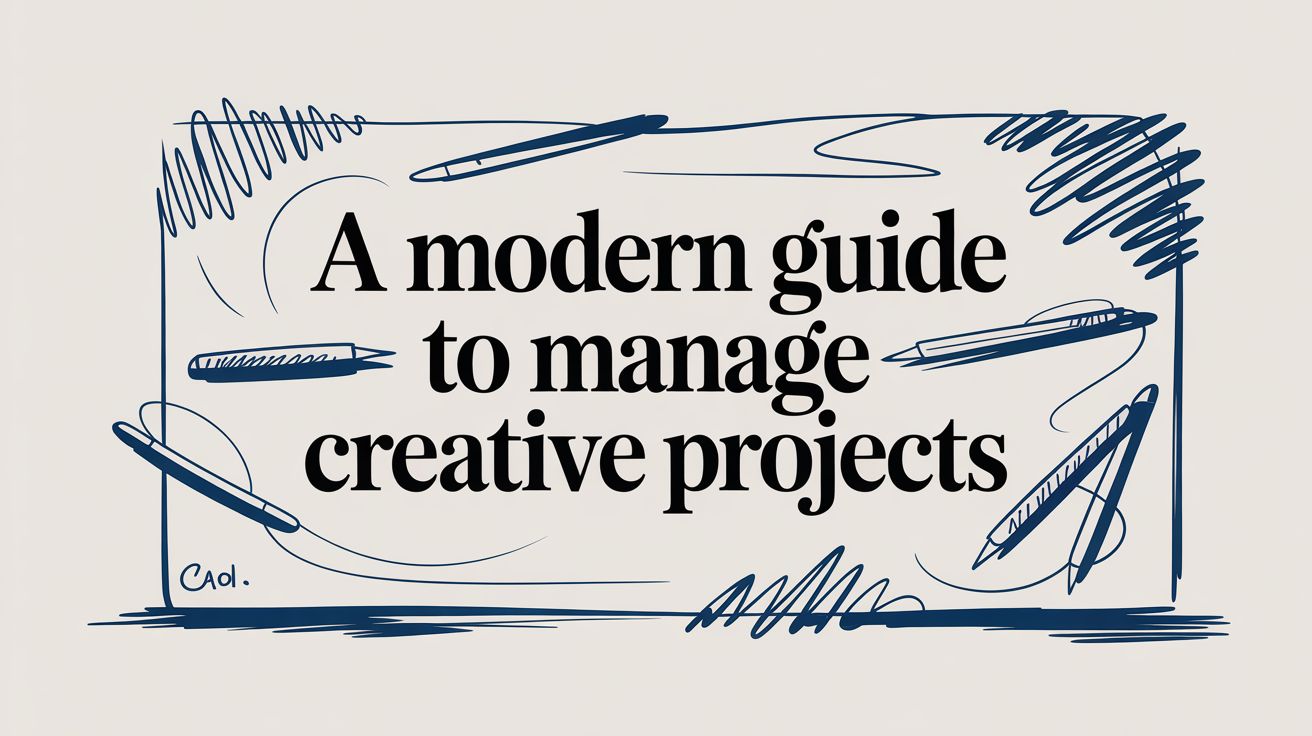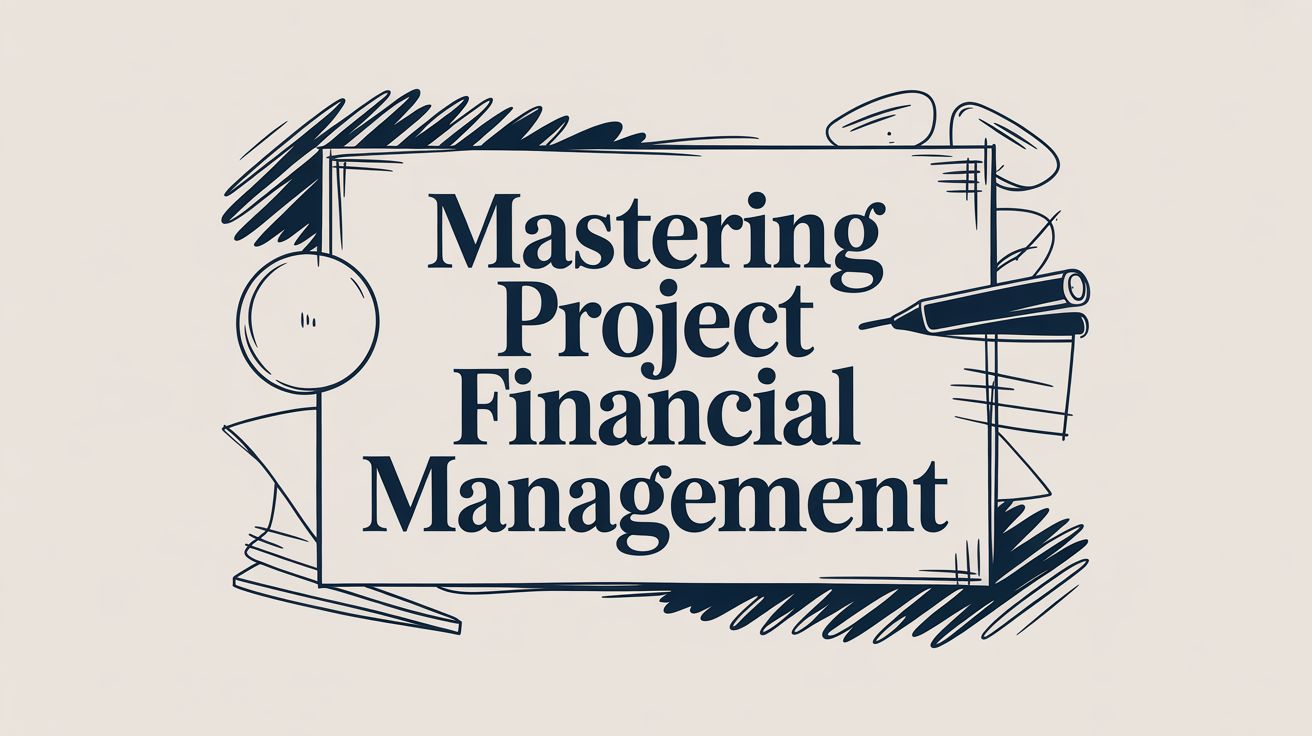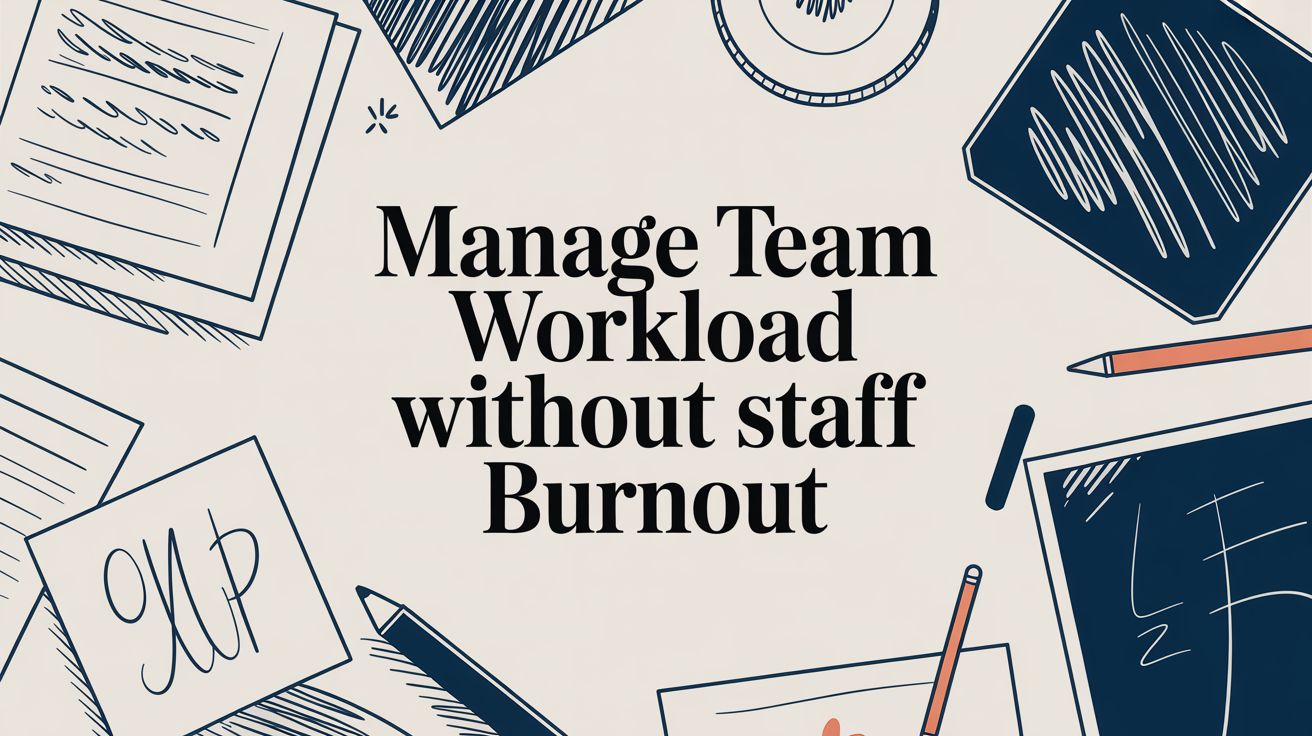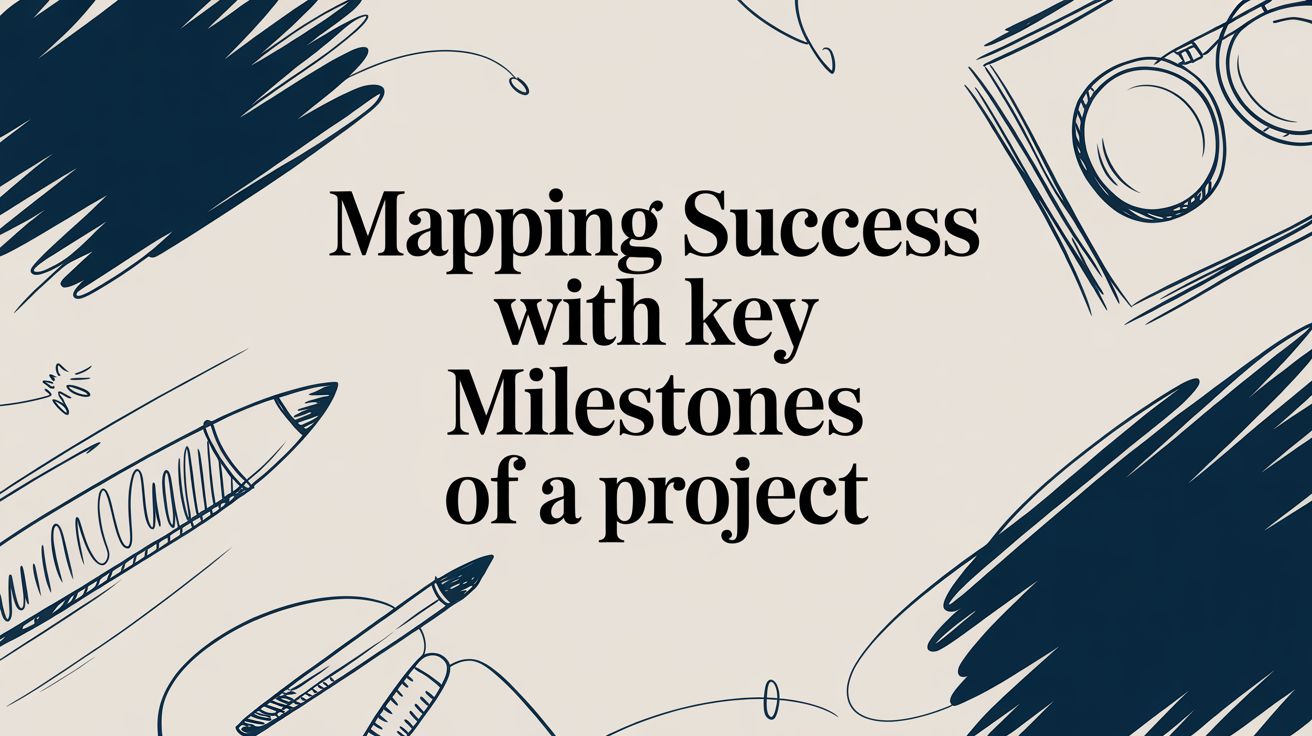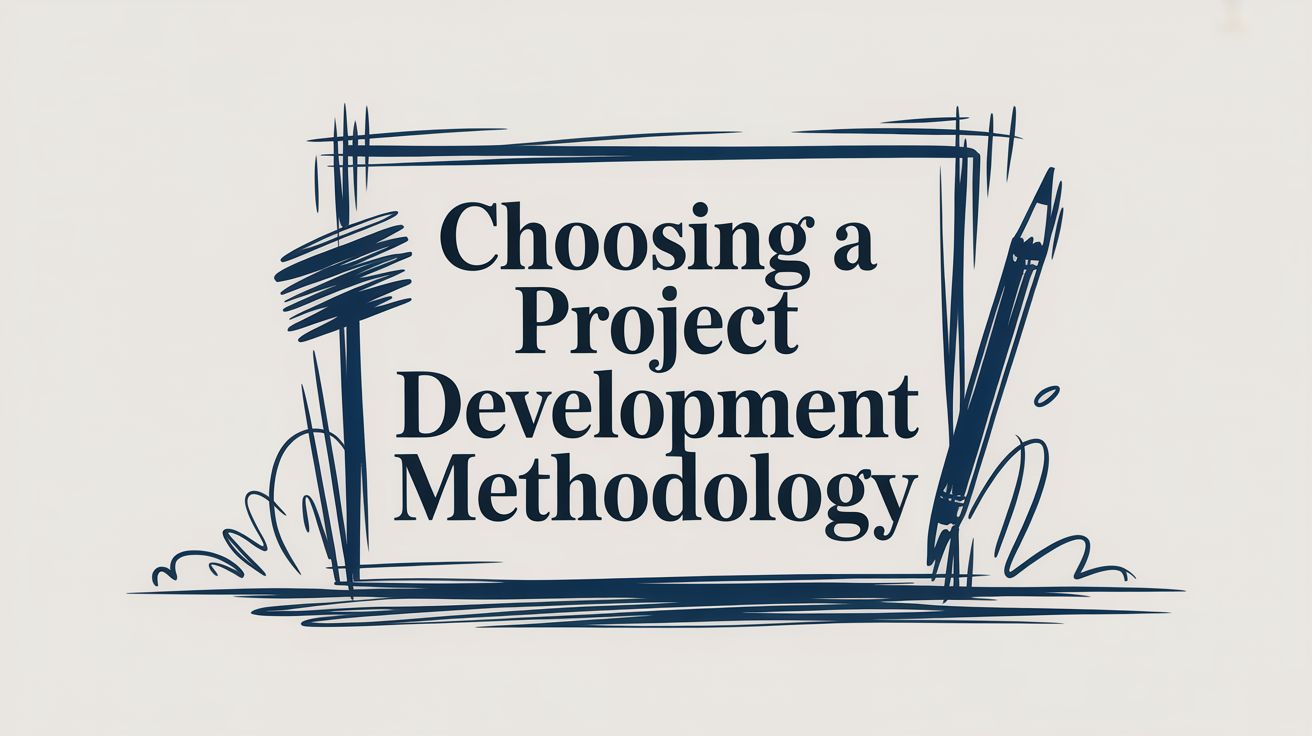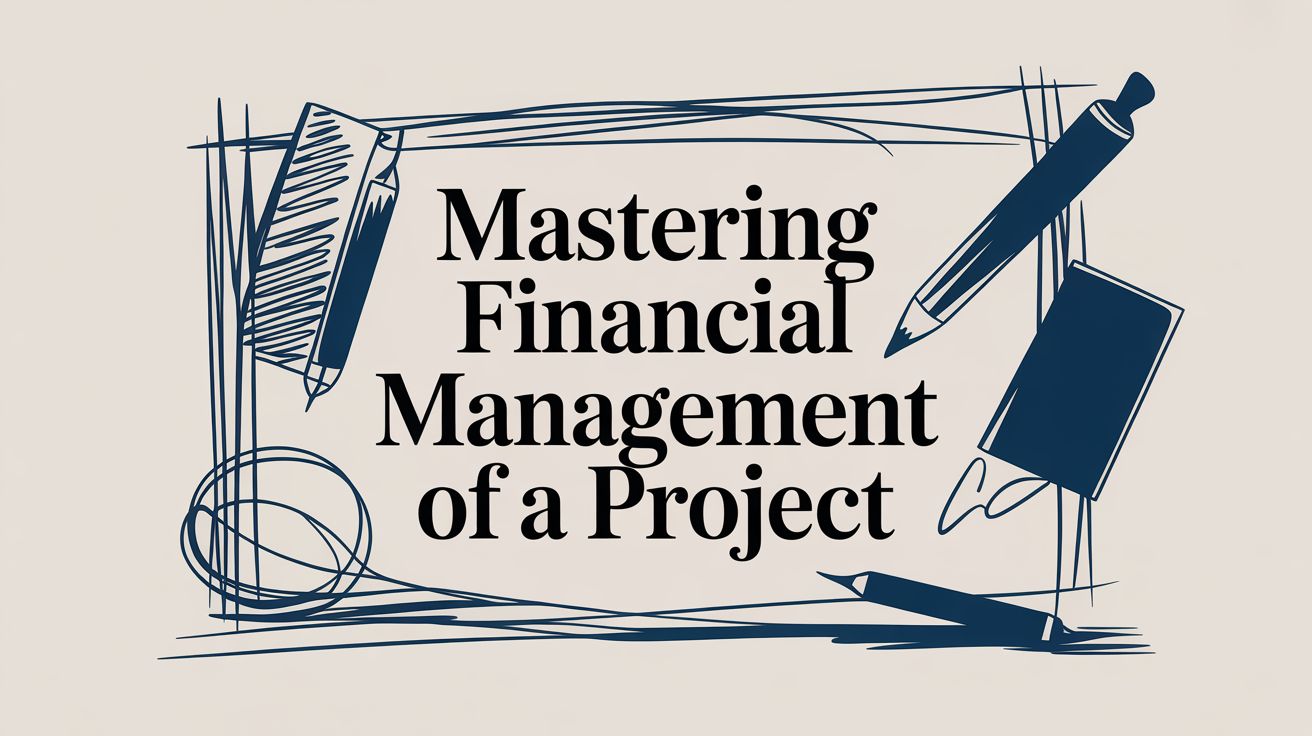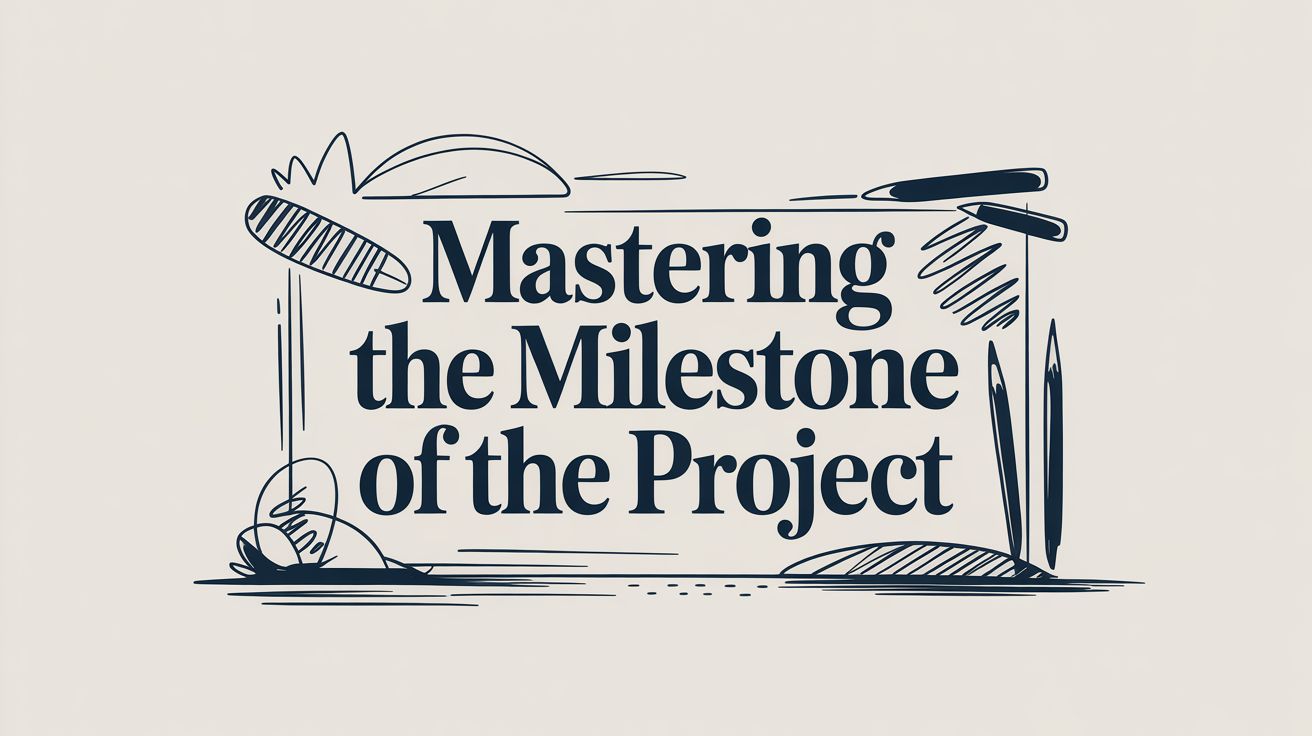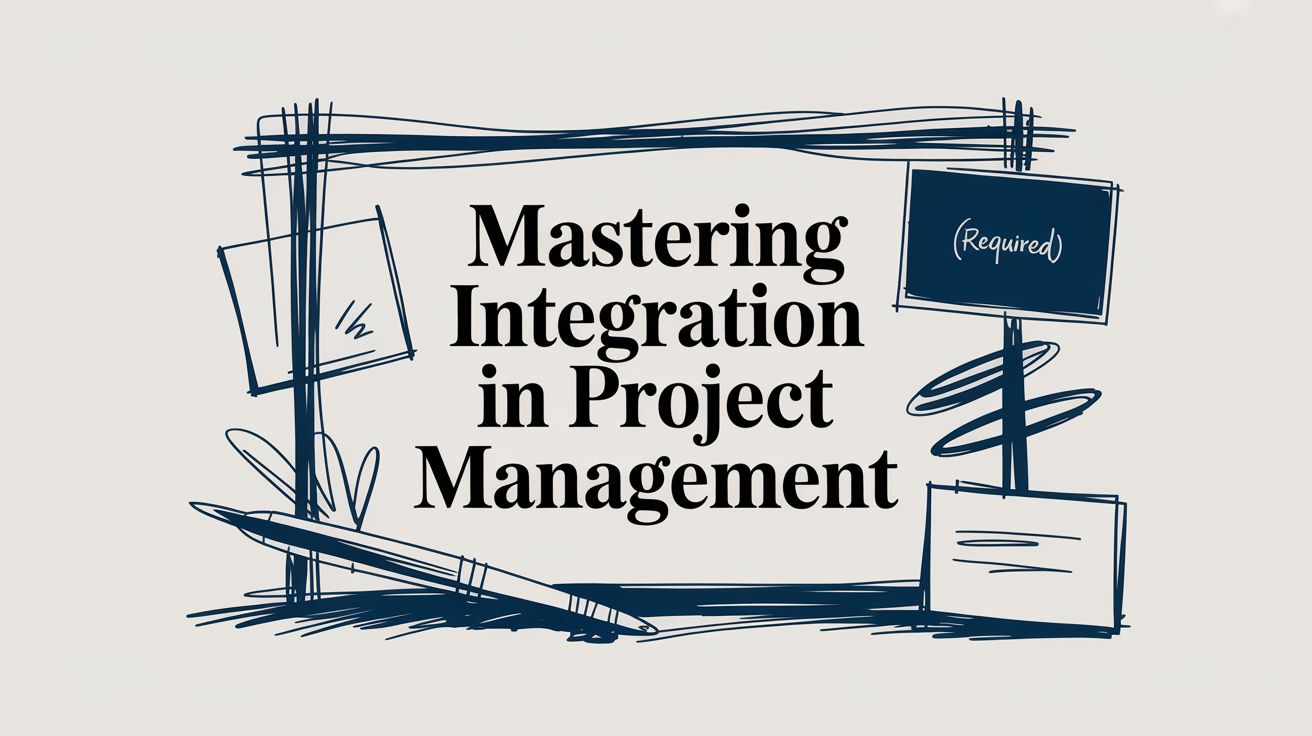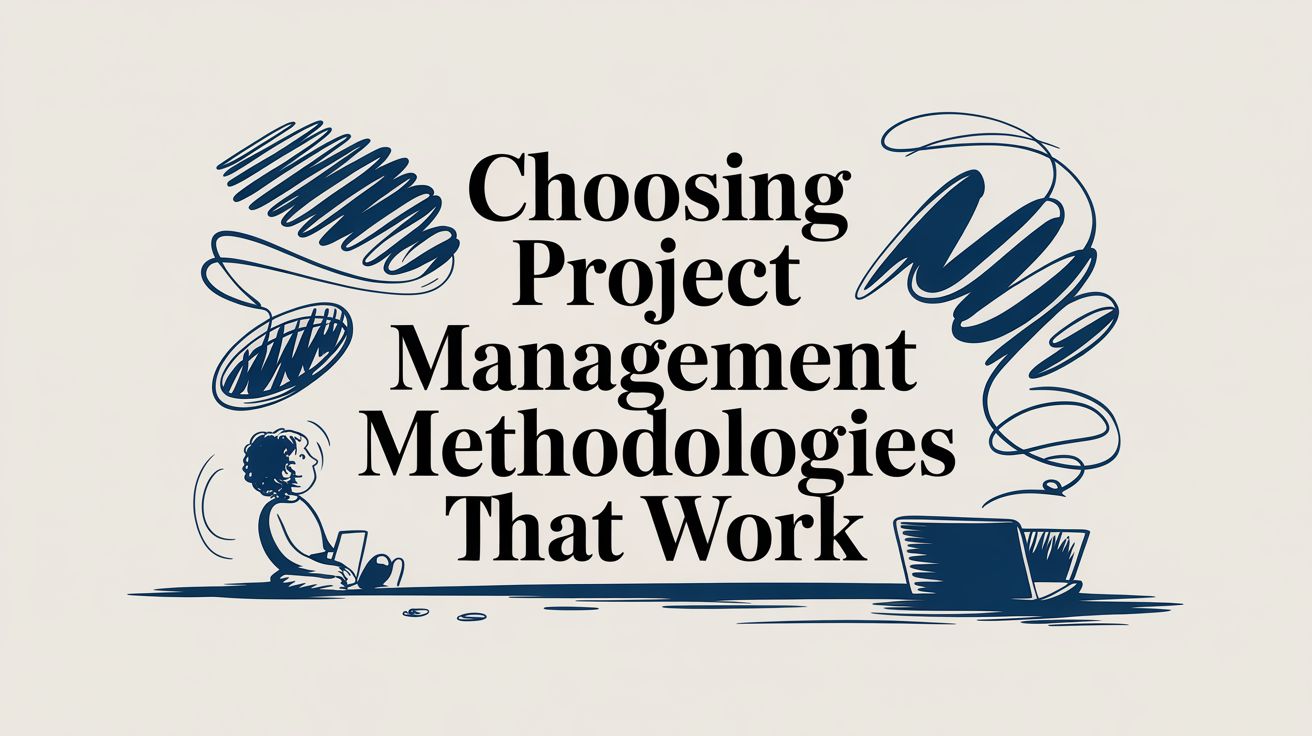Let’s be honest, letting workloads run wild isn't just a scheduling headache—it's a direct hit to your bottom line. When tasks are poorly distributed, the fallout ripples through the entire company. You start seeing it in missed deadlines, a dip in quality, and a team morale that’s clearly taken a nosedive. This isn’t just about people feeling stressed; it's about tangible business performance taking a hit.
The True Cost of Unmanaged Team Workloads

This problem is bigger than just one studio. Look at the UK's national productivity, and you'll see the same pattern. The country has a persistent productivity challenge, and a big piece of that puzzle is how we manage our teams. Figures from the Office for National Statistics (ONS) showed UK labour productivity at £46.92 per hour worked in 2023. That's a fair bit lower than other G7 countries like Germany and France.
A key reason for this gap? Inefficient workload management. Teams are often stuck in a cycle of being either completely overloaded or frustratingly underused. The data is pretty stark: while the average UK employee puts in an 8-hour day, they’re only truly productive for about 2 hours and 53 minutes. If you're curious, you can dive deeper into the UK labour productivity data on the ONS website.
Beyond Burnout to Business Impact
While burnout is a huge concern (and rightly so), the financial and operational costs of unchecked workloads are just as damaging. It might feel efficient to keep piling work onto your most capable people, but that’s a short-term game. Eventually, you hit a point of diminishing returns as their focus frays and creativity dries up.
On the other side of the coin, you have underutilised team members—a massive missed opportunity. Their skills aren't being put to good use, their potential is wasted, and it’s a fast track to disengagement. This imbalance creates a volatile workflow where projects are either dangerously behind schedule or moving at a snail's pace.
The real danger of poor workload management isn't just a single missed deadline. It's the slow erosion of efficiency, quality, and team culture that quietly undermines your company’s ability to compete and innovate.
The Foundations of Strategic Workload Management
To fight back against this, you need a proper strategy. Proactive workload management isn’t complicated; it’s built on three core ideas that set the stage for everything else.
- Complete Visibility: You can't manage what you can't see. The very first step is getting a crystal-clear, real-time view of every single task, project, and commitment your team is juggling.
- Fair and Smart Allocation: This is about more than just dishing out tasks. It’s about matching the work to the right person based on their skills, their current capacity, and even their career goals. It’s about being equitable.
- Dynamic Adjustment: Let's face it, plans change. A solid system has to be flexible. You need the ability to pivot, reallocate resources, and adapt smoothly when priorities shift or something unexpected lands on your desk.
Gaining Clear Visibility of Your Team's Capacity
You simply can’t manage what you can’t see. To get a real grip on workload management, you first have to pull all your team’s commitments out of those scattered spreadsheets, tangled email threads, and forgotten sticky notes. Everything needs to live in one place. Without that clear, central picture, you’re just guessing who has bandwidth and who is quietly drowning in tasks.
The first move is a proper audit of everything your team is currently working on. And I mean everything. This isn’t just about the big-ticket items on the official project plan; it’s about uncovering all the “hidden work” that eats up valuable time. Think about those quick five-minute favours, the endless internal review cycles, and all the little admin tasks that never make it onto a schedule but add up fast.
Going through this process for the first time is often an eye-opener. It almost always reveals a massive disconnect between what you thought your team's capacity was and what their actual workload is. Once you have this baseline, managing your team’s time stops being a gut feeling and starts being a data-driven process.
You want to create a dashboard view that can visualise all this complex information, showing who is working on what and who genuinely has the capacity for more.
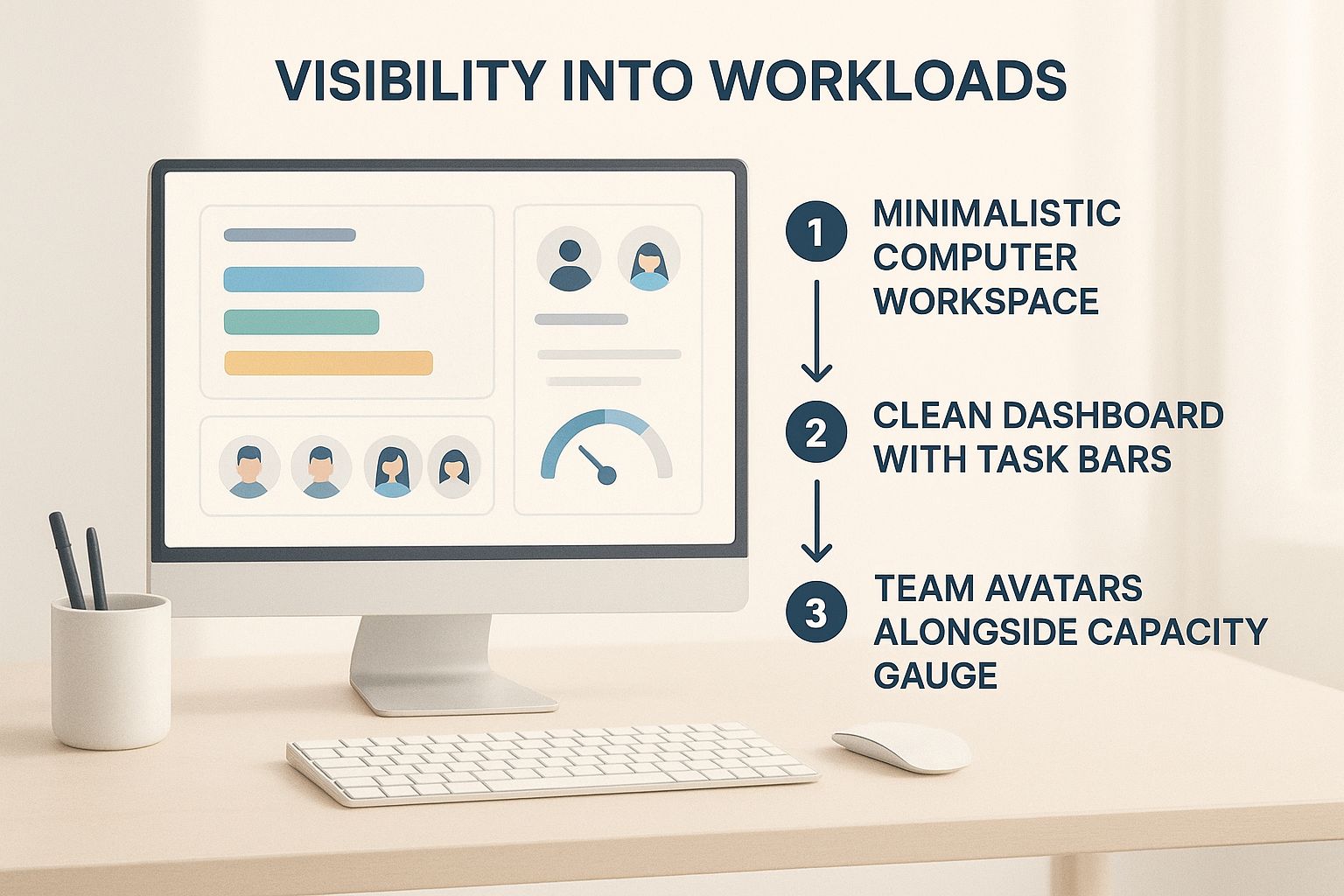
This kind of visual clarity is a game-changer. It instantly highlights potential bottlenecks and points you towards smarter ways to distribute tasks, turning a mountain of abstract data into real, actionable insights.
Uncovering and Estimating True Effort
Okay, so you’ve got all your tasks in one place. The next hurdle is figuring out how much effort each one actually requires. A classic mistake I see all the time is planning only for the core creative work and completely forgetting about all the essential, time-consuming activities that prop it up in any post-production workflow.
To build more realistic timelines, you need to break down tasks into their smaller components and start tracking how long they really take.
- Creative Execution: This is the primary job—the editing, colour grading, or sound mixing.
- Feedback and Revisions: All the back-and-forth cycles with clients and internal teams. This can be a huge time sink.
- Technical Setup: Time spent rendering, transferring data, and prepping project files.
- Communication: All the hours spent in review meetings, on client calls, and in internal sync-ups.
Just tracking these separate pieces for a few weeks will give you invaluable data. It helps you build much more accurate estimates for future projects and, crucially, protects your team from the burnout that comes with unrealistic deadlines. This granular approach is the foundation of successful workload distribution. If you want to go deeper on this, check out our comprehensive guide on what is resource planning and how it impacts team efficiency.
Gaining visibility isn't a one-time task; it's about creating a continuous flow of information. The goal is to build a system where workload data is captured automatically, keeping your capacity overview live and accurate at all times.
This is where a modern platform like freispace makes all the difference. By bringing scheduling, task management, and time tracking together, it gives you a real-time dashboard of your team’s capacity. This lets you stop firefighting and start proactively managing your team’s workload, making sure projects are properly resourced and your people stay balanced and productive.
Right, you've got a handle on everyone's capacity. Now comes the real art: distributing the work fairly and, just as importantly, intelligently. This is so much more than just ticking off a to-do list. We're aiming to build a system where every single task assignment feels deliberate and makes sense to the person receiving it.
The goal is to finally get away from that chaotic "loudest-voice-gets-the-resources" model. Instead, we want a system built on actual strategic importance.
This whole shift kicks off with a shared way of thinking about priorities. A lot of teams I've worked with have had great success adapting classic methods like the Eisenhower Matrix for their creative workflows. It’s a simple concept: you sort everything into four boxes – urgent and important, important but not urgent, urgent but not important, and the stuff that’s neither.
When the whole team agrees on what fits where, you create a common language. Suddenly, conversations about what comes next are clearer and less subjective. It’s the best defence against the urgent constantly trampling the important, which is a classic trap in the high-pressure world of post-production.
Choosing The Right Task Prioritization Method
Finding the right framework can make all the difference. It's not about rigid rules, but about finding a shared logic for your team's unique workflow. Here’s a quick rundown of a few popular methods to see what might click for you.
| Method | Best For | Key Principle | Potential Pitfall |
|---|---|---|---|
| Eisenhower Matrix | Teams juggling a mix of high-pressure deadlines and long-term strategic goals. | Differentiates between what's truly important and what's just making noise. | Can oversimplify complex tasks that don't fit neatly into one quadrant. |
| MoSCoW Method | Feature-driven projects with clear stakeholder needs (e.g., software development, VOD platform updates). | Categorises tasks as Must-have, Should-have, Could-have, or Won't-have. | "Shoulds" and "Coulds" can blur, leading to scope creep if not managed carefully. |
| Value vs. Effort | Quick decision-making when resources are tight and you need maximum impact. | Plots tasks on a simple 2x2 grid to find high-value, low-effort wins. | Estimating "value" and "effort" can be highly subjective without clear metrics. |
| Kano Model | Understanding client or audience satisfaction in product-focused post-production. | Focuses on features that delight, satisfy, or are simply expected. | More of a strategic guide than a day-to-day task manager; requires customer insight. |
No single method is a silver bullet. The best approach is often a hybrid, borrowing principles that resonate with your team and ignoring what doesn't. The key is consistency.
Matching Tasks To People And Potential
A truly great allocation system does more than just get the work done—it helps your people get better. Think of it as a chance to line up tasks not just with someone's current skills, but with where they want to go in their career.
Got a junior editor who’s keen to learn colour grading? Give them a few smaller, low-risk grading tasks. It's a massive win-win. They get hands-on experience that you can’t get from a textbook, and you start building more depth and skill right inside your own team.
This simple mindset shift turns task allocation from a boring logistical chore into a powerful tool for professional development. This is where a platform like freispace really shines, by letting you see at a glance who has the right skills for a task, making it dead simple to spot these growth opportunities while you're balancing the day-to-day workload.
True fairness in workload allocation isn’t about giving everyone the exact same number of hours. It’s about distributing challenges and opportunities in a way that’s transparent, respects individual capacity, and supports both personal and project growth.
Handling The Inevitable Curveballs
Of course, no plan survives contact with reality. The real measure of your system is how it holds up when things go sideways.
- Sudden Scope Creep: A client asks for "just one more thing," which turns into ten. With a transparent system, you can pull up the schedule and show exactly how those new tasks overload the team. It’s a data-backed conversation, making it much easier to justify pushing back, renegotiating a deadline, or bringing in a freelancer.
- An Unexpected Absence: Your lead sound designer calls in sick on a critical mix day. A clear overview of everyone's skills and current workload means you can reassign the most urgent tasks logically and quickly. You can pinpoint who has the right expertise and the bandwidth to step in without creating a domino effect of burnout down the line.
Having your schedules laid out clearly is your best friend in these moments. For a closer look at how you can build this kind of flexibility into your plans from the start, check out these practical examples of production schedules.
Ultimately, a fair and visible system builds trust. When your team sees the 'why' behind their assignments, they feel respected and are far more engaged and resilient. To take your approach to the next level, it's worth diving into mastering resource allocation optimization. By putting in the effort to create a clear process, you turn workload management into a strategic advantage, not just a daily headache.
Using Flexible Work to Balance Team Capacity

Let's be honest, managing a team's workload isn't the rigid, 9-to-5 puzzle it used to be. In post-production, where burnout is a constant threat, embracing flexible work is one of the most powerful moves you can make. It’s about empowering your team to work when they’re sharpest, which can make a world of difference to both output and morale.
This isn't just a hunch; the data from the UK workplace is pretty compelling. Flexible working is directly linked to better workload management. An impressive 71.2% of remote workers in the UK feel they have very flexible workloads. This shift is also paying off in efficiency, with hybrid work linked to a 52% jump in self-reported productivity. Add to that the 76% of hybrid workers who say their work-life balance has improved, and it's clear we're onto something big. If you want to dive deeper, there are more insights on how remote work is shaping UK productivity.
Implementing Flexibility Without Creating Silos
One of the biggest fears I hear about hybrid models is creating a two-tier system, where the people in the office get all the visibility. To get around this, your entire workflow needs to be location-agnostic. That means ditching the spontaneous hallway chats as a primary form of communication and getting more deliberate about how project information is shared.
This is where asynchronous communication becomes your best friend. Instead of demanding everyone be available for instant meetings, teams share updates and give feedback on their own schedules. This simple change gives people back their deep focus time, free from constant pings and interruptions.
- Centralised Project Hubs: Use a platform like freispace so that every project brief, asset, and piece of feedback lives in one accessible place for everyone.
- Clear Task Ownership: Make sure every task has an obvious owner and a deadline that the whole team can see. No more "I thought you were doing that."
- Scheduled Check-ins: Swap out the endless ad-hoc meetings for brief, scheduled video calls to sync up and tackle blockers together.
Getting this right often means picking a framework that actually supports this way of working. It’s worth exploring different project management methodologies to find one that clicks with a flexible, asynchronous flow.
The real goal of flexible work isn't just letting people work from home. It's about redesigning your entire workflow around trust and output, not just bums on seats and hours clocked. This shift gives your team the autonomy to manage their energy and deliver their best work, wherever they are.
At the end of the day, flexibility is a strategic lever for managing your team's workload. It respects that creative energy isn't a tap you can turn on and off between office hours. By giving your team more control, you're building a healthier, more sustainable, and far more productive environment.
Proactive Strategies to Prevent Team Burnout
The single most effective defence against team burnout is solid, proactive workload management. It’s all about getting out of that constant firefighting mode and building a culture that actually values your team's wellbeing. This means learning to spot the early warning signs of stress long before they escalate into a real problem.
What are those signs? Think about the subtle shifts. The chatty, ideas-person on your team suddenly goes quiet in meetings. Or the colleague who’s normally on top of every deadline starts letting small things slip through the cracks. These aren’t red flags for poor performance; they're often the first whispers that someone’s workload is becoming unmanageable.
Fostering a Culture of Psychological Safety
One of the most powerful things you can do is create an environment where people feel safe enough to be honest about their capacity. When your team members can actually say, "I'm at my limit," without fearing judgement, you unlock a vital feedback loop for keeping workloads balanced.
This kind of transparency stops people from struggling in silence until they hit a wall. For you as a manager, it provides the real-time data needed to shuffle priorities or reassign tasks before a minor overload spirals into a full-blown crisis.
The goal is to make conversations about capacity as normal as conversations about deadlines. It’s a collective responsibility to protect the team’s energy, and that starts with open, honest communication.
This cultural shift isn't just a "nice-to-have"—it directly impacts the health of the business. Poor wellbeing is a huge driver of absenteeism, which just creates a vicious cycle. When someone is off sick with stress, their work inevitably lands on everyone else, ratcheting up their burnout risk. Recent analysis from the Chartered Institute of Personnel and Development (CIPD) highlights that record-high employee absence rates in the UK are significantly fuelled by poor mental health and stress. This connection shows just how vital sustainable workload management is for keeping your team present and productive.
Building Buffers and Championing Real Breaks
Even the most meticulously planned schedule needs some breathing room. Building a buffer into your project timelines is non-negotiable. It’s what allows you to absorb the unexpected—a sudden urgent task, sick leave, or a creative roadblock—without throwing your whole team into chaos.
Using a resource planning tool like freispace lets you see where potential bottlenecks might pop up and where your capacity buffers are looking a bit thin. This foresight means you can plan for holidays and take on urgent requests without derailing entire projects.
Alongside smart planning, you have to actively champion proper breaks. And I don't just mean mumbling "make sure you take lunch" in a meeting. It’s about putting practical measures in place that give people their focus back.
- Implement 'Deep Work' Days: Block out specific days or afternoons with a strict no-meetings rule. This gives your team uninterrupted time to actually get into the creative zone.
- Encourage Proper Time Off: Lead by example. When you're on holiday, actually disconnect. Don't send emails after hours. This shows your team it's okay for them to do the same.
- Protect Lunch Breaks: Make it a rule not to schedule meetings over the lunch hour and encourage everyone to properly step away from their desks.
These small, consistent actions send a powerful message: you value your team's wellbeing just as much as their output. To keep your team healthy and productive in the long run, consider weaving in other strategies for overcoming burnout in the workplace. By embedding these proactive habits into your workflow, you build a resilient team that can handle the pressure without burning out.
Common Questions on Managing Team Workload
Even the best-laid plans run into trouble. Let's be honest, managing a team's workload in post-production is full of tricky situations that can throw a spanner in the works.
Here are a few of the real-world hurdles managers face all the time, and how to navigate them without losing momentum or morale.
How Do I Handle Team Members Pushing Back on New Tasks?
It’s a classic scenario. You assign a new task, and someone on your team pushes back. Your first instinct might be to reiterate the deadline, but that rarely helps. This pushback is often a signal that your team is overwhelmed or they simply don't have the context to understand the priority.
So, instead of pushing harder, get curious.
Start by asking open-ended questions to get a real sense of their current plate. Something like, "Can you walk me through what you're juggling right now?" can uncover hidden tasks or bottlenecks you weren't even aware of. This isn't a confrontation; it's a collaborative problem-solving moment.
Pull up your team's schedule together—this is where a visual tool like freispace is a game-changer. Look at their capacity in black and white. You can frame it as a joint effort: "Okay, I can see you're maxed out. Let's look at the priorities. What can we shift to make room for this new job?"
This approach turns a potential conflict into a conversation about strategic trade-offs. It shows you respect their workload and value their input.
A team member saying "no" or "not right now" isn't a sign of defiance. More often, it's a valuable piece of data telling you that your current workload model has hit its limit. Listen to it.
What’s the Best Way to Distribute Urgent Unplanned Work?
Sudden, high-priority tasks are just part of the job in post-production. The real test is handling them without derailing the entire team or breeding resentment. It's tempting to just throw it at your most reliable "hero" employee every time, but that's a one-way ticket to burnout.
Your first move should be to consult your resource plan. You need to see who has the right skills and—just as important—the actual capacity to take it on. Look for team members who aren't already deep in a complex, high-focus task. Interrupting someone in the middle of a critical project is a recipe for inefficiency.
When you do assign that urgent task, be transparent with everyone about what's being temporarily shelved to make room. This clarity is vital for maintaining a sense of fairness.
For example: "Heads up, everyone. A critical client request just landed. Alex is going to pivot to handle it, which means the initial sound mix for Project B will be pushed by a day." This kind of communication prevents confusion and shows you're making deliberate choices, not just reacting to chaos.
Ready to move from theory to action? freispace gives you the real-time visibility and intelligent scheduling tools you need to answer these questions with data, not guesswork. See who's busy, who has capacity, and make smarter allocation decisions that keep your team balanced and your projects on track. Transform your workload management with freispace.

